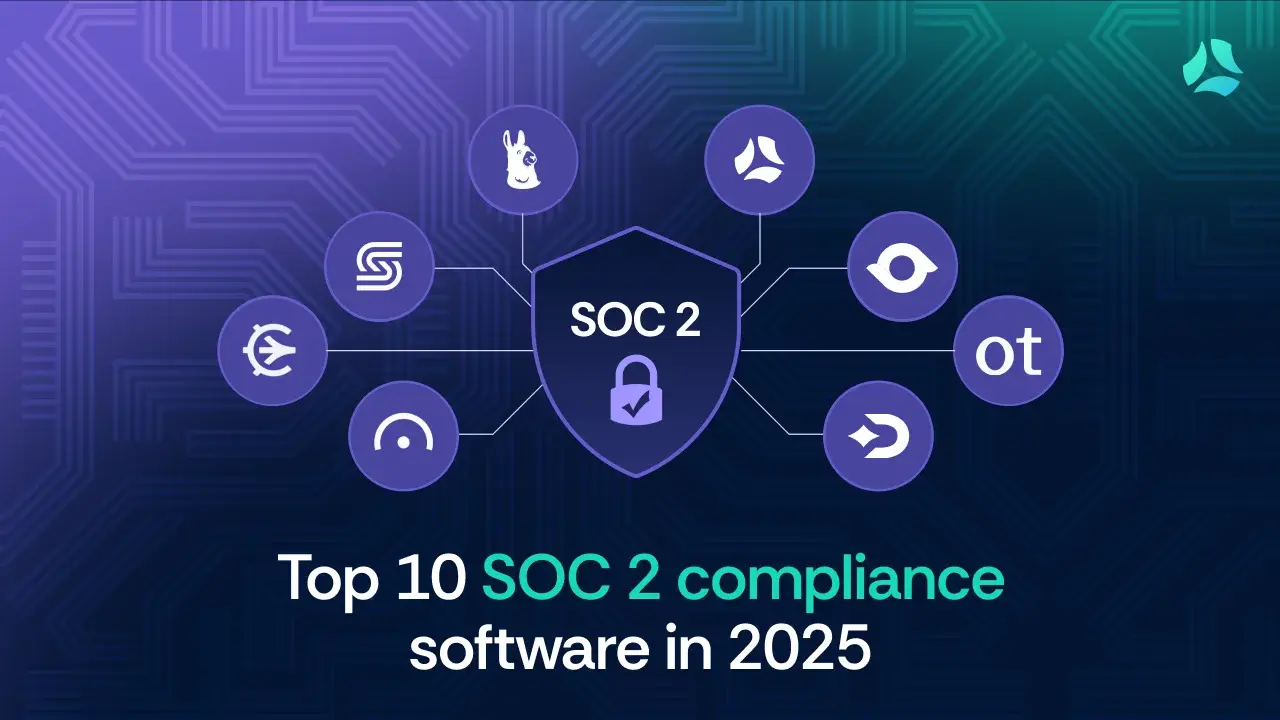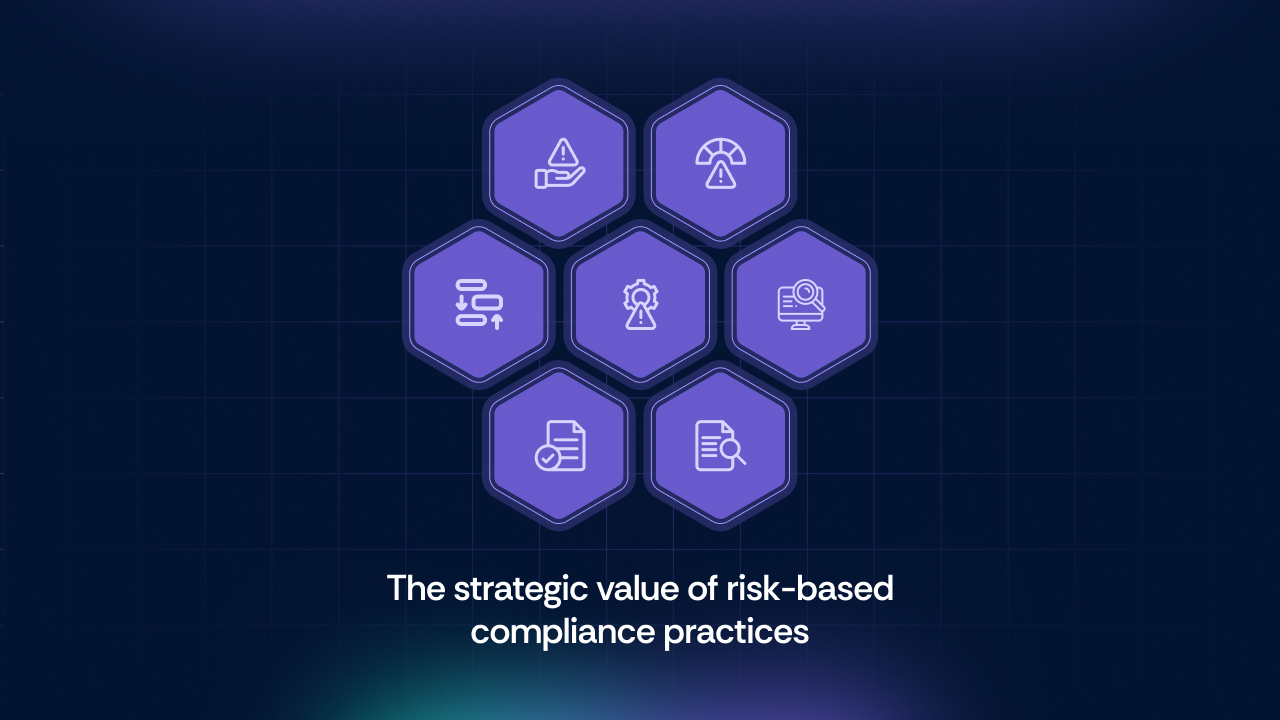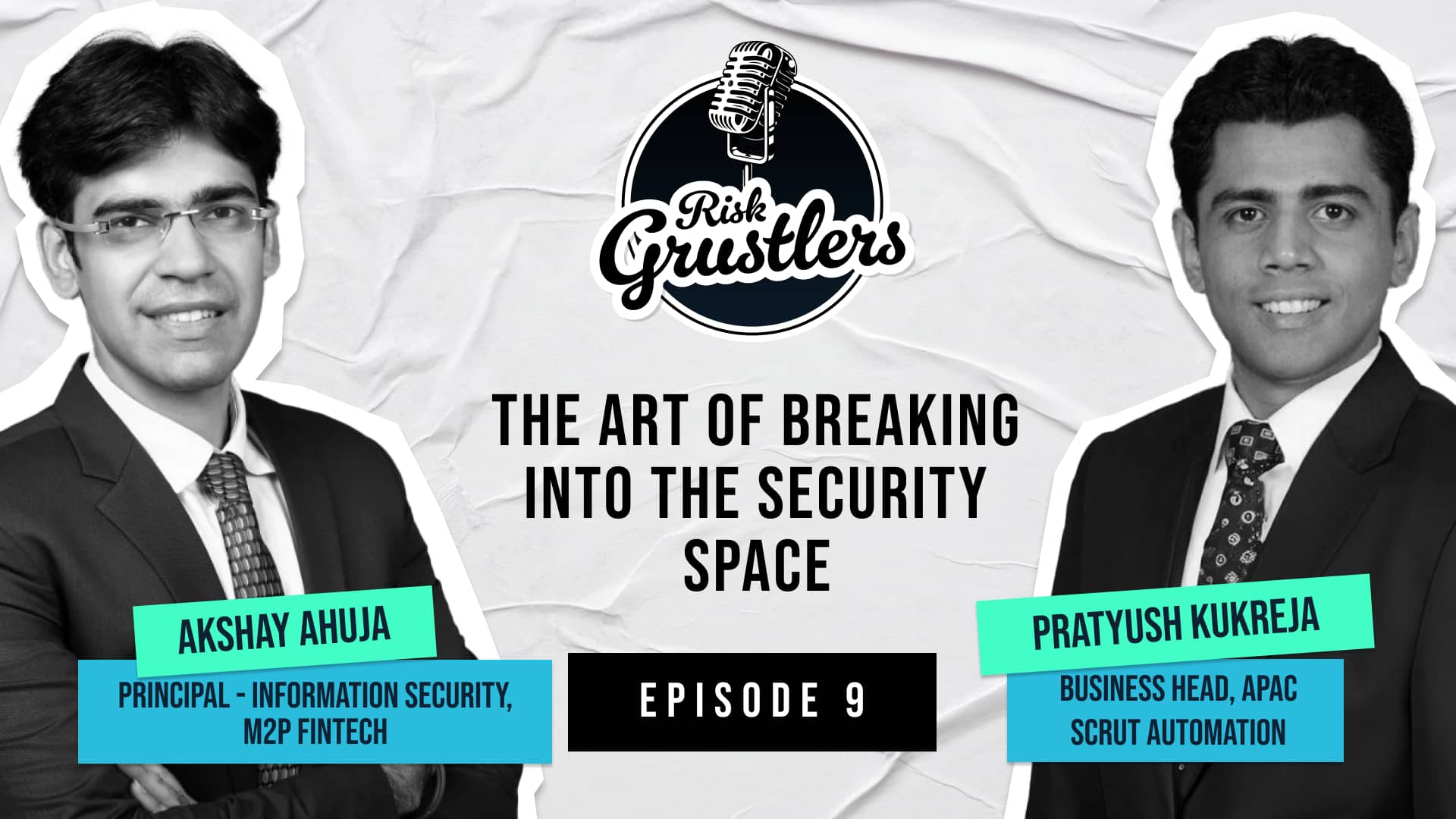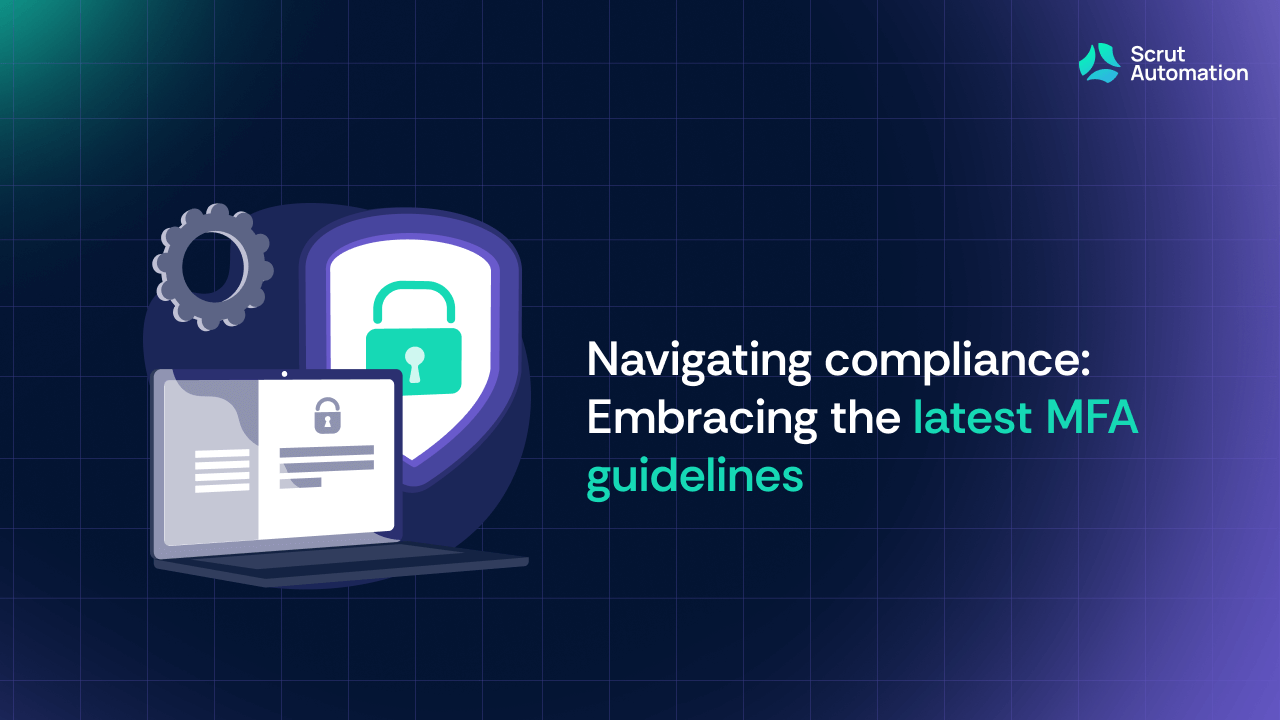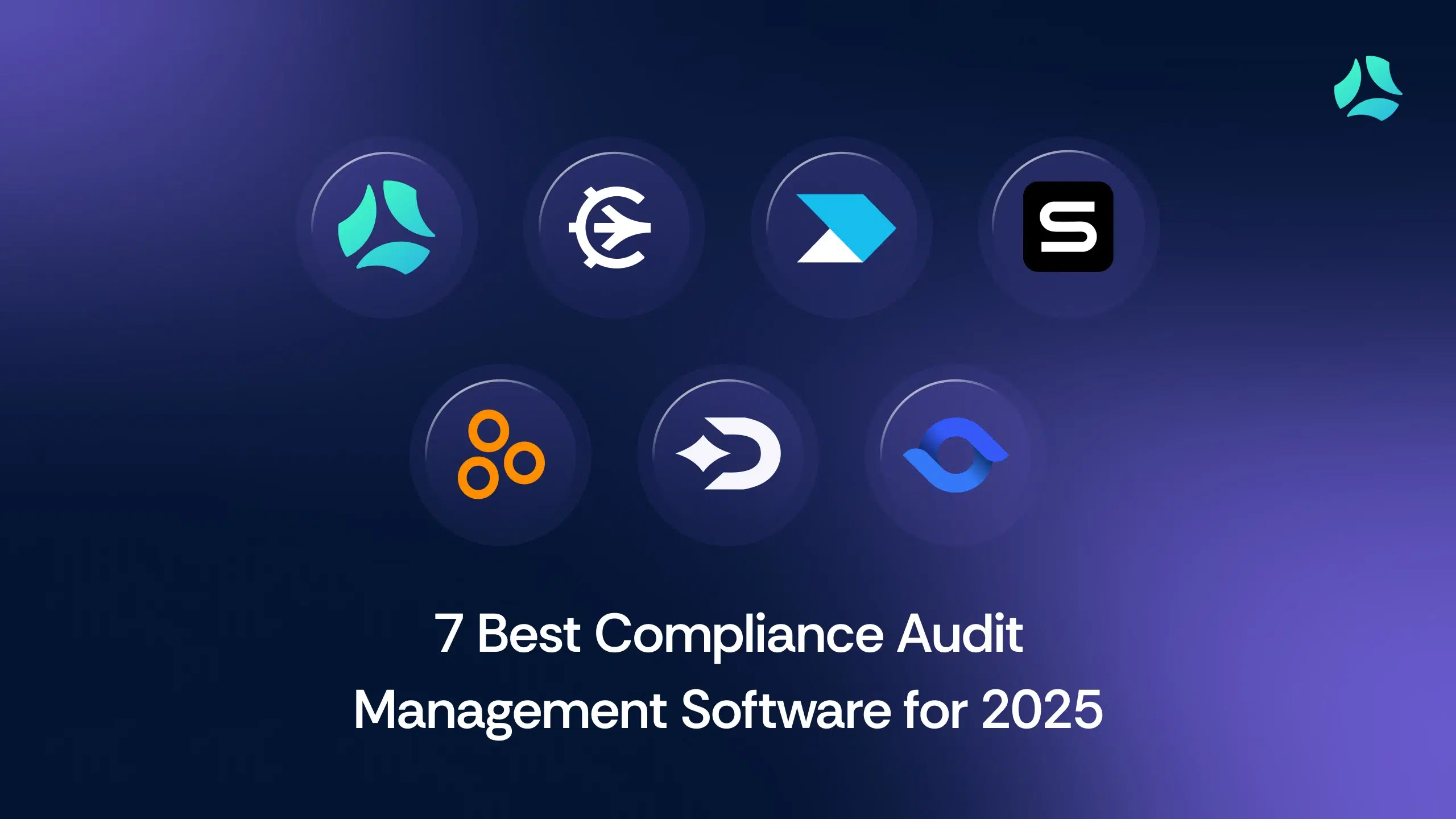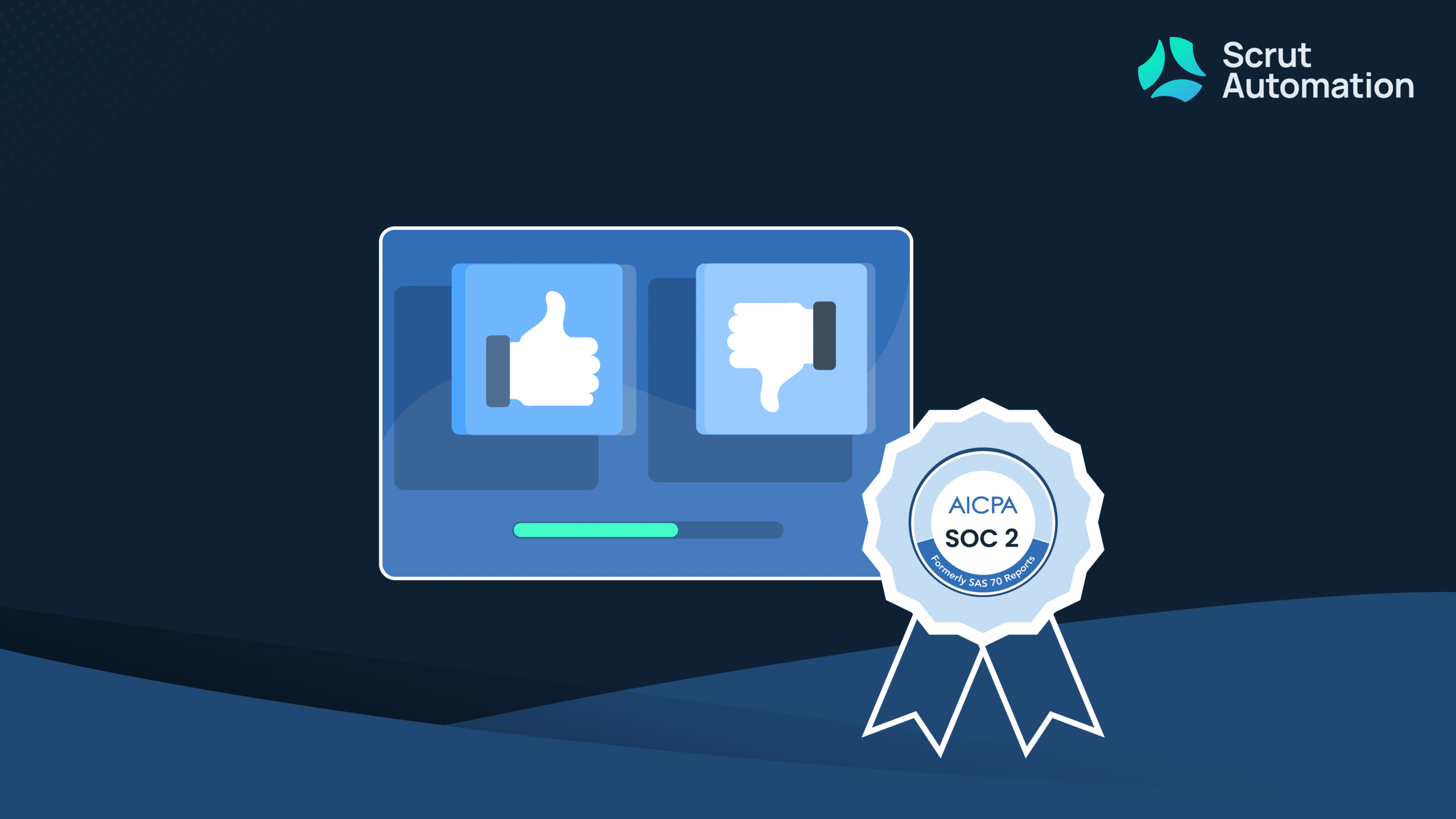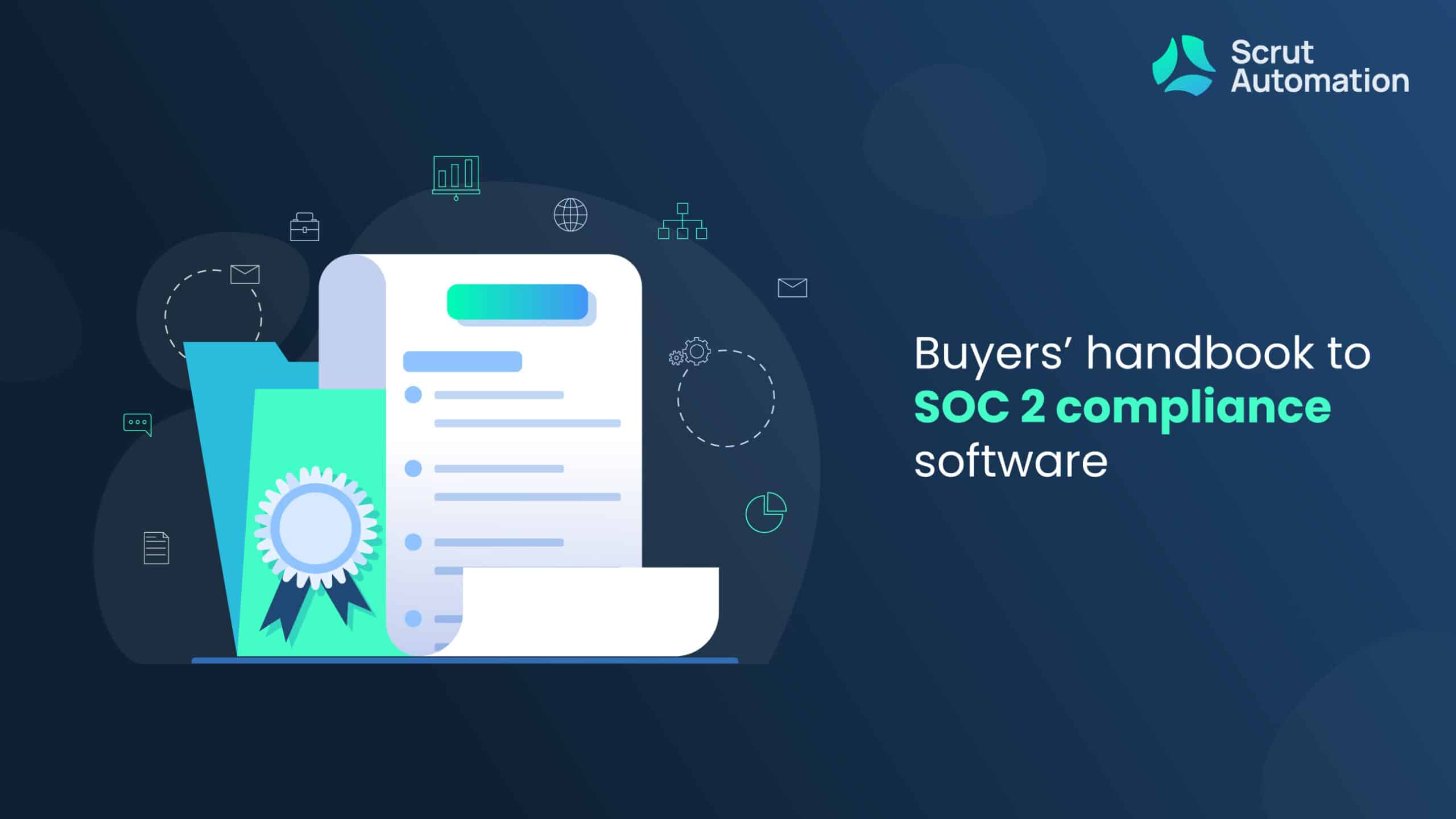Compliance is no longer optional but a necessity for businesses. It protects sensitive customer data and builds consumer trust, which is crucial for business growth.
In an IBM survey, 70% of organizations reported that a data breach significantly disrupted their businesses. The average breach cost reached $4.88 million in 2024, a 10% increase from 2023.
By implementing the SOC 2 standard, a robust security and compliance framework, you can significantly improve your data security posture and strengthen your brand’s credibility among potential customers.
However, implementing it is a lengthy and resource-intensive process. A SOC 2 compliance software can help shorten your compliance journey from months to weeks.
This blog post compares the 10 best SOC 2 compliance software, enabling you to make an informed choice for your compliance automation needs.
Top 8 SOC 2 Compliance Automation Software and Tools
There are hundreds of SOC 2 compliance software available in the market. Here are the 15 best SOC 2 compliance software we have shortlisted to cut down your research.
1. Scrut Automation
With 11 Momentum Leader badges and 257 other badges awarded by G2’s Winter 2025 Report, Scrut is the leading SOC 2 compliance software solution in 2025.
It is an innovative, unified GRC automation platform that simplifies compliance management for businesses of all sizes, from early-stage startups to mid and enterprise-level organizations. It supports several compliance frameworks, including, but not limited to, SOC 2, ISO 27001, CCPA, GDPR, and HIPAA.
Scrut’s SOC 2 compliance platform’s other outstanding features include:
- 100+ pre-built policies with customization options and expert guidance
- Single-window SOC 2 compliance management without additional overheads
- Over 80% of automated evidence collection against pre-mapped SOC 2 controls
- Real-time automated control monitoring with configurable alerts
- Fast SOC 2 auditing by sharing data with auditors and consultants
- Enhanced visibility into security and compliance postures
- Access to in-house SOC 2 compliance experts with 50+ years of combined expertise
Other features
- Automated evidence collection: Automatically collect evidence for SOC 2 audit with 75+ integrations, reducing efforts by 80% and become audit-ready in under six weeks.
- Streamlined compliance workflows: Create, assign, and monitor compliance tasks with built-in artifact sharing with the entire team. You can even collaborate with the auditors to get expert guidance.
- Risk management: Perform end-to-end risk management with round-the-clock risk and compliance monitoring, from spotting issues and assessing their severity to suggesting fixes. Equally important is Streamlining vendor management with due diligence, risk scoring, and ongoing monitoring to stop supply chain attacks in their tracks.
- Employee compliance: Ensure your employees comply with the established policies by monitoring employee usage at every endpoint, providing security awareness training for your teams, and assessing system access using logs.
Example of Scrut’s SOC 2 compliance software in action
Brikl, a custom product-selling platform, fast tracked their SOC 2 compliance with streamlined audit preparation, collaborative workflow tracking, and enhanced visibility. According to Brikl’s team, their favorite Scrut modules include Policy Builder, Audit Center, Evidence Tasks, and Vendor Management.
Pros
- Supports the most extensive number of compliance frameworks.
- Offers access to all modules without additional costs.
- Provides intuitive UI and customizable workflows so your team can tailor the system to their needs.
- Enables enhanced visibility into compliance activities with dedicated dashboards for each module.
- Helps achieve SOC 2 compliance quickly with personalized customer support and guidance from global compliance experts.
Cons
- Has a complex initial setup, according to some users, due to the extensive features
Here’s what reviews on G2 say about Scrut compliance software, with the highest overall review of 4.9/5 in its segment:
Scrut Overall Reviews and Organic Customer Review Sample on G2
Pricing and Demo
You can schedule a demo to explore the benefits of the Scrut SOC 2 compliance software and get the best custom pricing according to your compliance needs.

2. Vanta
Vanta is a compliance automation software that simplifies security audits with risk and compliance management. It supports regulatory frameworks like SOC 2, ISO 27001, HIPAA, and GDPR.
Key features
- Compliance automation: Reduce the effort and time to achieve SOC 2 compliance with automated compliance tasks and reporting.
- Integrations and continuous testing: Automatically integrate with popular identity services, cloud providers, and task managers to speed up the tiresome evidence-collection process with automated, real-time compliance checks.
- Centralized dashboard: Enhance visibility into your security and compliance posture on a single platform where you can perform employee background checks and educate staff on security-related issues.
Pros
- Automates compliance and controls assessment for cloud providers.
- Conducts hourly compliance checks and reduces time-to-compliance after successful setup.
- Streamlines compliance management with ready-to-use control frameworks.
Cons
- Restricts crucial modules behind paywalled access.
- Lacks clarity to recognize and recommend a vulnerability management plan.
- Needs improvement in scalability, user access review module, and customer service, according to user reviews.
- Requires a steep learning curve to operate the platform.
- Requires time-consuming adjustments as AI-generated SOC 2 control descriptions are too generic.
Pricing and demo
Vanta offers three different plans – Core, Growth, and Scale – for early-stage to sophisticated compliance teams. Visit their website to request a demo and get custom pricing.
3. Drata
Drata also makes this list for its ability to efficiently achieve and maintain several compliance standards within a single platform.
Key features
- Integrations and automation: Eliminate redundant tasks and automatically gather and store evidence to quickly become audit-ready with minimal effort.
- Continuous monitoring: Ensure security and compliance with round-the-clock control monitoring and improved visibility into your compliance tasks.
- User-friendly interface: Simplify compliance management with an easy-to-use platform with well-organized management features.
Pros
- Identifies security gaps and suggests effective remedies.
- Features a single, unified dashboard with a comprehensive view of all artifacts to gain valuable insights.
- Streamlines audit preparation with quick setup, real-time compliance insights, and efficient evidence collection.
Cons
- Relatively expensive, making it unsuitable for small businesses.
- Limited questionnaire functionality in the vendor management module.
- Few customization options for companies, limiting their scalability.
Pricing and demo
Drata offers Essential, Foundation, and Advanced plans, depending on your audit and GRC requirements. You can get more details and request a demo by visiting their website.
4. AuditBoard
AuditBoard is a compliance automation platform that unifies the risks, policies, controls, frameworks, and issues to help your business meet increasing compliance requirements.
Key features
- IT risk management: Simplify cyber threat management with pre-built risk templates with risk assessment and ranking to comprehend and mitigate risks
- User access permissions: Manage user roles and assign permissions according to Principle of Least Privilege (PoLP) to ensure data security and avoid breaches.
- Streamlined evidence collection: Use the same evidence for several audits and compliance frameworks and share it with auditors as required.
- Report management: Automatically generate audit-ready reports to accelerate the audit process and get SOC 2 attested quickly.
Pros
- Provides a comprehensive set of tools to manage the audit process
- Helps set up convenient workflows with out-of-the-box reporting features
- Allows centralized communication and collaboration with access control for various stakeholders
Cons
- Charges for each module separately, increasing the overall cost
- Requires a steep learning curve for new users
- Takes longer to get used to the complicated UI
Pricing and demo
You can schedule a demo and get custom quotes based on your business size and compliance needs.
5. LogicGate
LogicGate, a cloud-based, scalable GRC automation software, is an efficient solution for businesses looking primarily for risk assessment and management.
Key features
- Compliance management: Maintain SOC 2 framework compliance with automated daily monitoring, testing, and compliance checks.
- Enhanced risk visibility: Perform end-to-end risk management, with tasks including risk identification, scoring, mitigation suggestions, and prediction.
- Streamlined Workflows: Manage compliance and security with no-code functionality, automated evidence collection, and third-party integrations.
Pros
- Offers a customizable platform helping users tailor the system to their specific needs
- Has an expert and responsive customer service team.
Cons
- Needs a steep learning curve initially.
- Generates clumsy reports with limited analytics, preventing effective decision-making.
Pricing and demo
You can request custom pricing based on your business size and program requirements by visiting its website.
6. OneTrust
OneTrust is another compliance platform streamlining the SOC 2 audit process with its efficient automated compliance and data privacy management tools.
Key features
- Data privacy and security: Use pre-built controls and leverage automated mapping of your business data to SOC 2 framework rules to protect customer data security.
- Integrations: Integrate your organization’s digital tech stack with the platform to automatically fetch evidence and streamline compliance, saving your team’s time and efforts.
- Report generation: Automatically create compliance reports using its audit reporting tools to achieve SOC 2 compliance quickly.
Pros
- Provides robust data privacy and security mechanisms with multi-framework support.
- Enables organizations of all sizes to scale with features such as integrations and pre-built controls.
Cons
- Significantly expensive for small to mid-sized businesses.
- Requires technical expertise to integrate with the existing systems.
- Burdensome for smaller firms to handle extensive functionalities.
Pricing and demo
Its pricing is based on admin users and asset inventory. Contact OneTrust’s team to request a demo and get custom pricing for your compliance needs.
7. Secureframe
Secureframe SOC 2 compliance software helps you create security policies according to your business needs. With a prebuilt library of customizable policies, you can form a bespoke collection of shareable security protocols with your compliance team.
Key features
- All-in-one platform: Leverage a single, unified dashboard to protect your cloud environment, perform risk assessments, and train your compliance team.
- Real-time monitoring: Continuously check for compliance issues, receive instant notifications, and get suggestions based on your security requirements, pre- and post-audits to achieve and maintain compliance.
- Streamlined audits: Simplify the audit process with automated evidence collection, vendor risk management, and integrations with API support.
Pros
- Saves time and effort with automated compliance management features.
- Has a user-friendly interface with intuitive features for various business needs.
Cons
- Has a complex pricing model, according to some users.
- Lacks compliance knowledge, particularly SOC 2 audits.
- Does not provide full-time support.
Pricing and demo
Secureframe offers two packages – Fundamentals for basic compliance and Complete for scaling – with custom pricing. Check its website to learn more about pricing or request a demo.
8. Apptega
Apptega is a compliance management software that helps businesses achieve SOC 2 certification, implementing the standard with best practices.
Key features
- Quick assessments: Use pre-built questionnaires, integrations with your data sources, and gap status reports to expedite the SOC 2 compliance assessment and audit process.
- Risk mitigation: Quickly perform risk management tasks before the audit, such as risk detection, scoring, and mitigation, to walk the audit tightrope successfully.
- Vendor security: Consolidate security assessments of all your vendors in one place to simplify vendor evaluations.
Pros
- Saves substantial time in achieving compliance.
- Simplifies integration with other tools and robust vendor management.
Cons
- Has slow operational speed and data refresh due to outdated UI.
- Requires high technical expertise for data integrations.
- Lacks features for large enterprises, especially in the finance sector
Pricing and demo
It offers three plans: Starter (14-day free trial), Advanced (custom pricing), and Premium (custom pricing). Visit its website to learn more about their pricing packages.
Key features of SOC 2 compliance software
Before diving into comparisons, let’s explore the essential features your SOC 2 compliance software must have to achieve and maintain the SOC 2 certification successfully:
1. Automated evidence collection and controls assessment
Automating evidence collection and testing of controls reduces manual effort, errors, audit fatigue, and operational disruptions. It helps you manage evidence and streamline audits with minimal or no business disruption.
2. Risk and compliance management
The SOC 2 compliance software must help you identify, assess, and mitigate compliance risks, system vulnerabilities, and gaps in security controls. This streamlines compliance workflows and enables faster issue resolution.
3. Continuous control monitoring and alerts
According to the Verizon DBIR 2024, the manipulation of vulnerabilities to execute a breach almost tripled in a year, so real-time monitoring of security controls is crucial. Issues may arise for every cloud or application test mapped to each control. A good compliance platform should provide continuous logging and assist in remediating critical matters. It should also notify relevant stakeholders about important security events. This way, detecting potential security issues proactively and allowing quick response and recovery is possible.
4. Reporting and audit readiness
It is essential to have a detailed view of audit progress and all mapped controls in its purview. Stakeholders must know the current status of all artifacts mapped to controls and take proactive steps to remediate gaps. This way, when an auditor audits your documentation, they can see the latest updated status of your security documentation and the ongoing progress, if any.
Further, there should be access to the automatic creation of clear, concise audit reports that can be easily shared with stakeholders, including auditors and business partners. It helps you save time on the tedious task of preparing reports and enables quicker audit completion.
5. Comprehensive risk management
Choose a platform that helps you with holistic risk management, makes you audit-ready and provides comprehensive IT and cyber risk management. Your platform must identify, assess, and reduce risks, including cloud risks, 24/7 control monitoring with alerts, and employee policy non-compliance issues.
A strong compliance tool should provide a centralized risk register with actionable workflows to assign and manage risks in real time. With built-in risk scoring and prioritization, organizations can focus on the most critical threats, whether they stem from cybersecurity vulnerabilities, internal compliance gaps, or evolving regulatory requirements.
6. Multi-framework support
Besides SOC 2, there are several other frameworks, like HIPAA (for the US), GDPR (for the EU), ISO 27001 (global standard), etc., that your business must comply with. As your business expands across multiple geographies and diversifies its offerings, complying with frameworks beyond SOC 2 becomes imperative.
Besides adhering to regulatory standards, complying with multiple frameworks means implementing stricter controls, which leads to gaining the trust of larger enterprises.
So you must choose a tool that helps you manage compliance with frameworks with in-built policy templates. The tool should also support custom frameworks tailored to your unique needs. From a business standpoint, such features help you scale your security posture quickly. Features such as policy templates and in-built control mapping help you scale faster without significantly affecting your business processes.
7. Unified dashboard and integration capabilities
The SOC 2 compliance process requires several tasks, including the management of risks, evidence, controls, policies, audits, reports, user roles, and integrations. An intuitive, user-friendly UI with a dedicated dashboard to perform each task mentioned above is a must, as it simplifies audit completion and provides greater visibility into each process.
The tool must also come with pre-built artifact templates and the ability to integrate with your existing tech stack to automate workflows, saving time and expediting the compliance process.
Choosing the right SOC 2 compliance software for your business
Even after narrowing your choices down to the top 10 platforms out of hundreds, selecting the right one remains challenging, as every business has unique compliance needs.
Here’s a checklist of factors to consider before making the final decision:
| Business-specific factors | Software-specific factors |
| Organization industry, size, and complexityCurrent and future framework compliance requirementsRelevant Trust Services Criteria (TSCs)Company’s budgetary constraintsGrowth and scalability needsData handling and automation requirementsCustomer volume and regional regulationsExisting tech stack | Software pricing modelsSoftware provider reputation and customer reviewsIntegrations with the tech stackUsability, user-friendliness, and simplicityCustomization and flexibility needsTraining and change managementCustomer support and expert guidance |
Get your business SOC 2-compliant within weeks with Scrut
SOC 2 compliance is not just a buzzword, it’s a comprehensive framework that shows your dedication to data privacy and security, enabling you to:
- Develop trust among stakeholders
- Gain a competitive edge
- Build a security-first culture in your organization
With the highest user rating, Scrut’s automated SOC 2 compliance platform offers a bespoke solution for fast-growing companies and businesses of all sizes with affordable pricing and comprehensive, multi-framework support. We help you eliminate compliance debt with automated workflows, real-time risk visibility, and expert guidance.
We also provide handholding for your compliance efforts, from initiation to certification and continuous improvement.
Simplify your compliance journey with us. Learn more about SOC 2 compliance or schedule a demo with Scrut today to enhance data security and quickly achieve compliance.

FAQs
Why is SOC 2 compliance software important?
With the constantly evolving regulatory requirements in different regions, businesses must automate their efforts to quickly achieve SOC 2 compliance to avoid losing consumer trust and prevent data breaches. A SOC 2 compliance software platform can help you streamline your audit process with key features, saving time and effort.
Is SOC 2 compliance necessary for all businesses?
While SOC 2 compliance is not a legal requirement for every business, complying with it is an effective tactic to demonstrate commitment to security and build trust among stakeholders, mainly if your business handles sensitive customer data. It is highly recommended to comply with SOC 2, especially for SaaS companies, cloud service providers, and managed service providers (MSP) who manage large amounts of customer information.
What are the key differences between SOC 2 and ISO 27001?
SOC 2 compliance, a US-centric framework, is based on five trust criteria, of which security is mandatory, while others are optional depending on business needs. A successful SOC 2 audit fetches your business an AICPA auditor’s attestation report, which will be renewed annually. ISO 27001, on the other hand, is a globally recognized standard requiring compliance with its 93 controls, categorized into four groups. It results in a compliance certification to be renewed every three years with annual surveillance audits.
